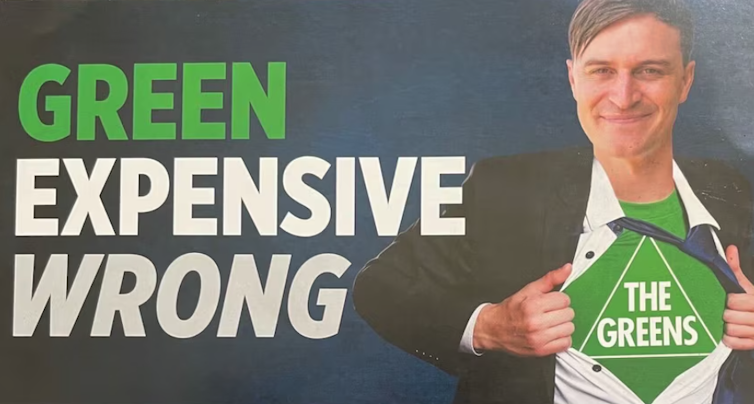Federal parliament has passed the biggest changes to Australia’s electoral funding laws in decades.
The Albanese government’s Electoral Legislation Amendment (Electoral Reform) Bill 2024 cleared the Senate on Wednesday night after just two hours of debate on amendments agreed to earlier by the Coalition. In blatant disregard for democracy, the government refused to refer the bill to a parliamentary committee for proper scrutiny.
The amendments fail to address numerous deficiencies in the original bill that was introduced last November. Transparency has been wound back and hollow contribution caps have been locked in.
In significant respects, however, the package is an improvement on the status quo, which has seen unrestricted donations and spending flourish. So, too, secrecy.
We need to penetrate the sound and fury of partisanship and assess the substance of these laws. This will yield a much more nuanced picture than conveyed by cross bench claims of a major party stitch up.
Some improvement to transparency
The government originally proposed lowering the disclosure threshold for donations from $16,000 to $1,000. The revised bill settles on a new threshold of $5,000.
The amendments fail to plug a loophole that allows a donor to give separately to all of the branches attached to a political party if each individual contribution is just under the threshold. For example, a donor could spread almost $45,000 to the nine state and federal branches of the ALP without being required to declare the amounts.
But the new laws will usher in near-real time disclosure and substantially reduce “dark money”, a seismic shift from the secrecy and lack of timeliness in the regime it replaces.
Hollow donation caps
Under the reforms, a series of contribution caps have been introduced to curb the influence of big money in politics.
In my assessment of the original bill, I highlighted how the caps would prevent multi-million dollar contributions from cashed-up individuals.
The amendments go further by closing a number of sizeable loopholes. Self financing candidates, such as Clive Palmer and Malcolm Turnbull will be subject to the contribution caps. The current exclusions for membership and affiliation fees to associated entities – “disguised donations” – will also be caught by the caps.
But any positives are emphatically outweighed by the “annual gift cap” more than doubling to $50,000. The same “spreading” loophole that applies to the disclosure obligations would allow a donor to to give just shy of this amount to each of a party’s state and federal branches across the country. The major parties could reap up to almost $450,000 per annum from a single donor.
And the “overall gift cap” on total donations made to political parties and candidates is a generous $1.6 million, which means large contributions will still be permissible under the new framework.
The government has also failed to remove the patently unfair provisions relating to “nominated entities”, which are likely to be used by the major parties as investment vehicles.
As the Victorian Electoral Review Expert Panel has rightly noted, such entities:
provide some (parties) with significantly more funds, creating a risk that those (parties) drown out other voices.
Election spending contained and fairer
The spending caps in the new finance laws are fundamentally unaltered by the government’s amendments.
The $800,000 per electorate limit, and $90 million per party nationally, will contain the “arms race” that has necessitated “big money” fundraising and fuelled unfair contests.
However, the limits are set too high and will benefit the established parties due to the narrow scope of the spending caps in individual electorates. This means the major parties will be able to shift funding to must-win seats without being caught by the electorate caps.
This shortcoming has been seized upon as clear evidence that Labor and the Liberals are seeking to kneecap Teal election campaigns. While having some force, these criticisms should be viewed in the context of the current situation where the major parties have an unfettered ability to direct spending to marginal seats, a situation which the Teals are ironically defending with their opposition to spending caps.
The importance of public funding
The new regime includes a substantial jump in public funding from $3.50 to $5 per vote.
Crossbenchers, such as Kate Chaney, are opposed, to the increase, saying it will entrench the might of the majors while making it harder for new independents:
The effect of increasing public funding is that political parties don’t have to fundraise because they’ve got their war chests. But any challengers do have to fundraise.
While there is a clear risk of unfairness, the crossbench position throws the baby out with the bathwater. It romanticises the role of private funding, skating over the risks of corruption and undue influence via large donations.
The public funding of political parties and candidates is warranted. But there should be a conversation about the design and scope of taxpayer support.
The political finance laws could be made considerably fairer by fixing the structural bias that favours incumbents, including teal MPs. And they don’t need to be as generous given the large flows of private funding that will continue under the shallow contribution caps.
Unfinished business
Bad processes tend to make bad laws. The government’s actions have cast a pall of illegitimacy over its political finance regime. The new framework is unfair and ineffectual in significant ways and yet democracy enhancing in others.
We are all trustees of democracy, with an obligation to protect and deepen democratic practices. An urgent task in that continuing struggle is to protect the strengths of these laws while jettisoning the elements that are egregiously bad.![]()
Joo-Cheong Tham, Professor, Melbourne Law School, The University of Melbourne
This article is republished from The Conversation under a Creative Commons license. Read the original article.
